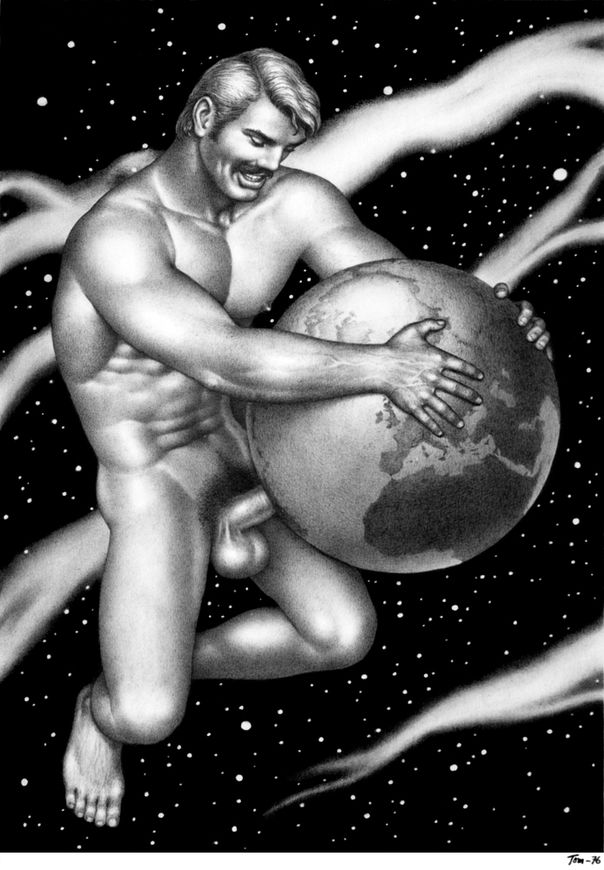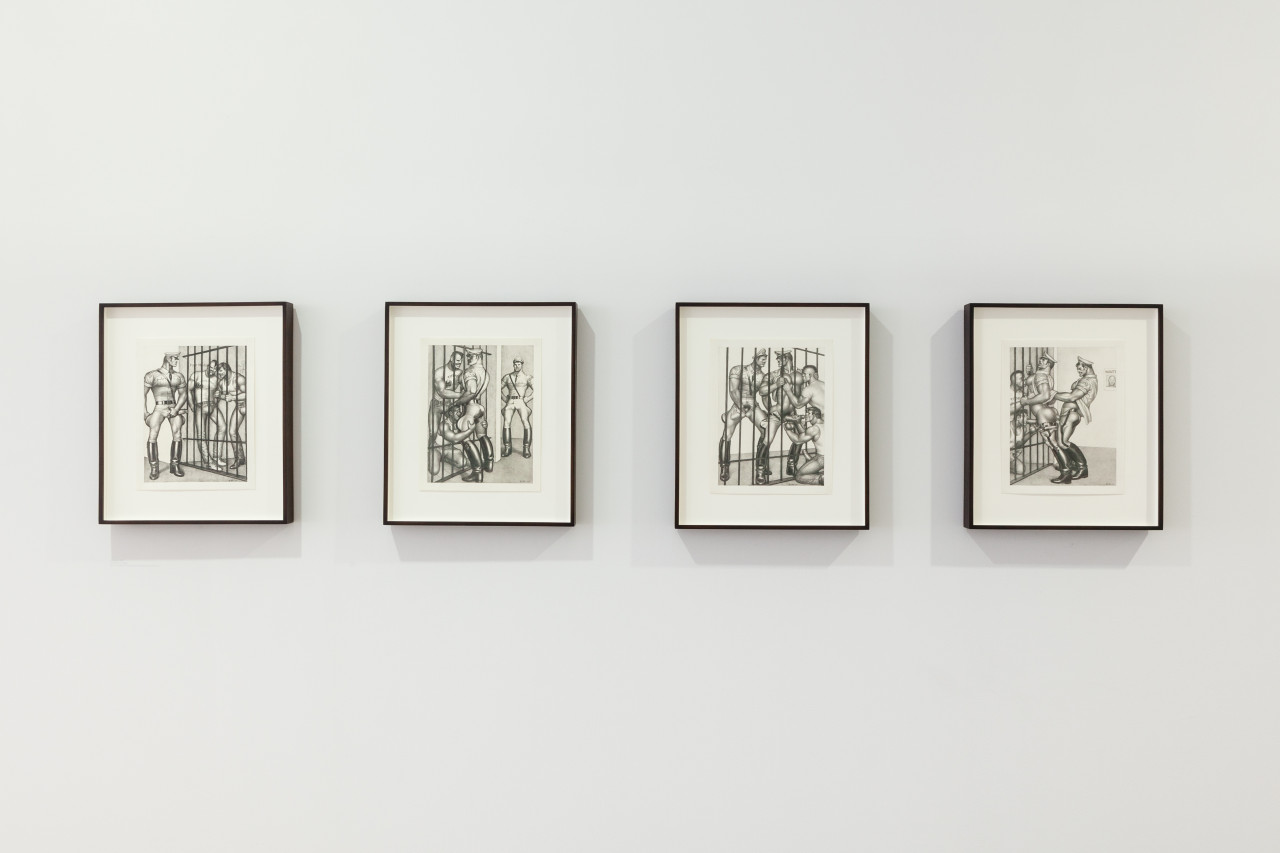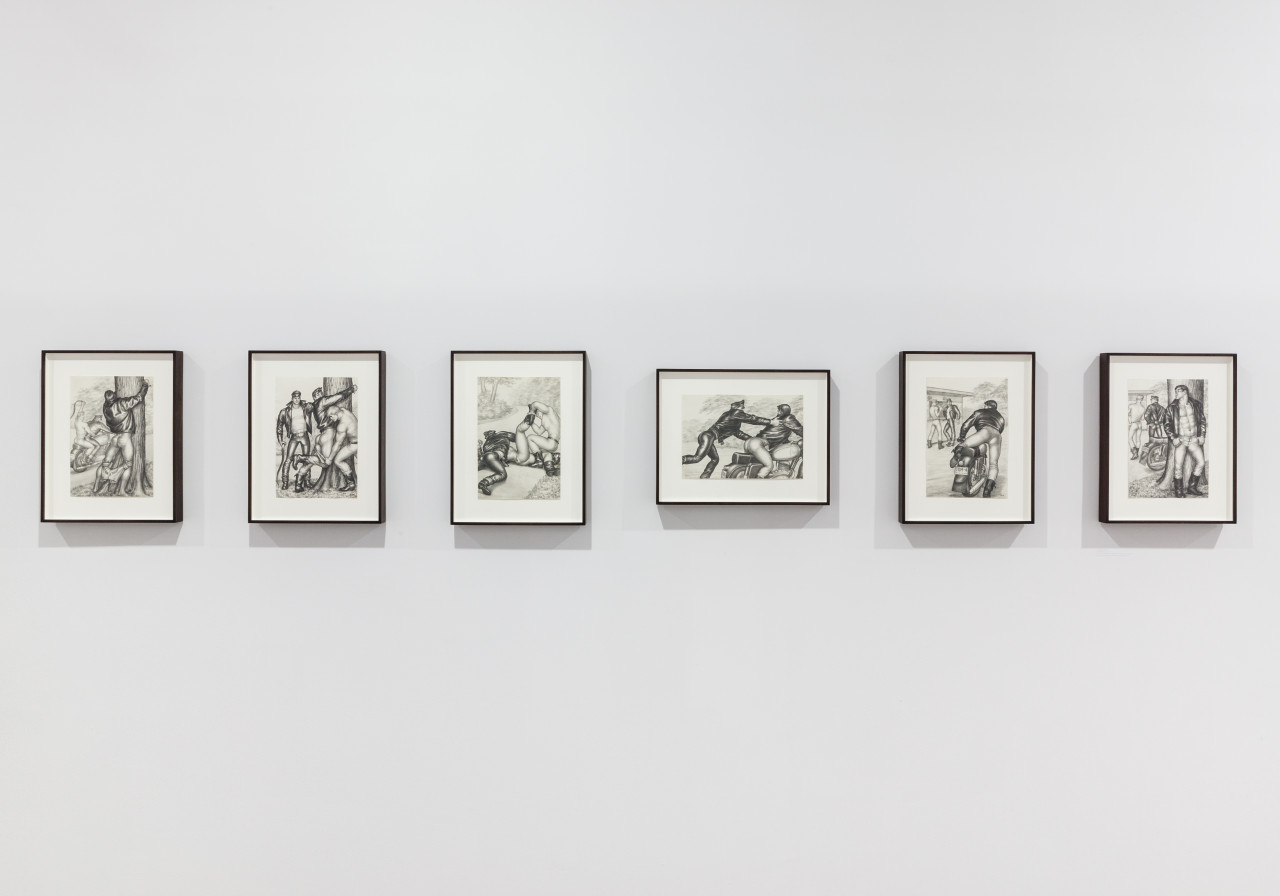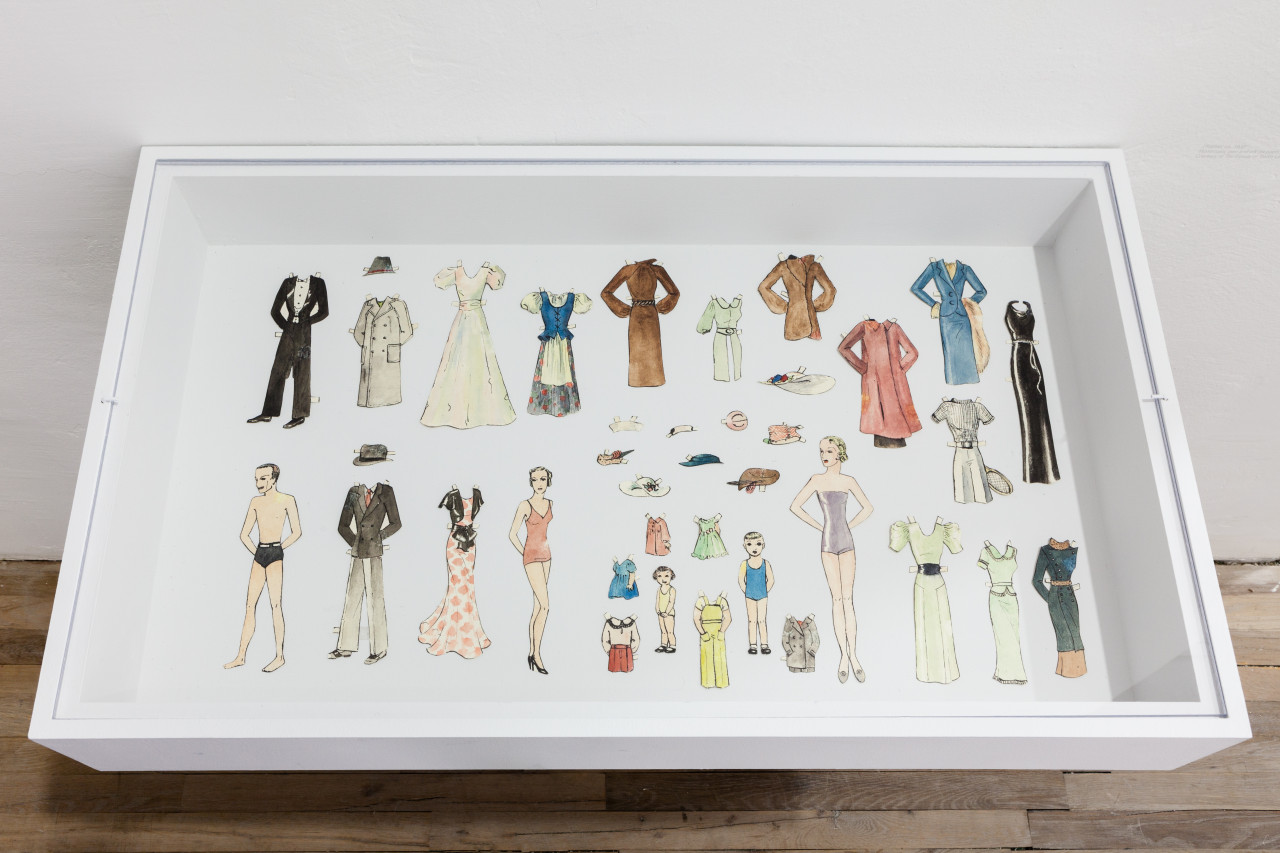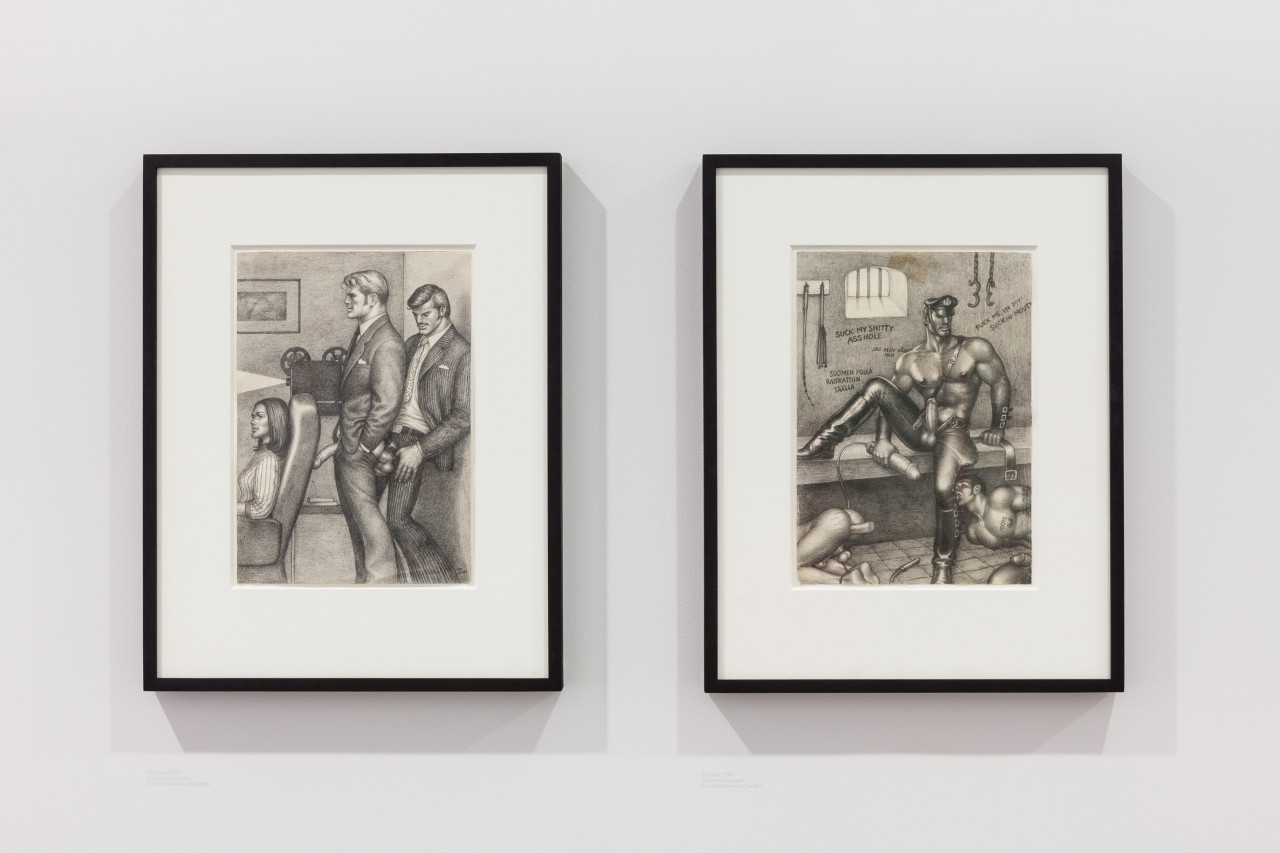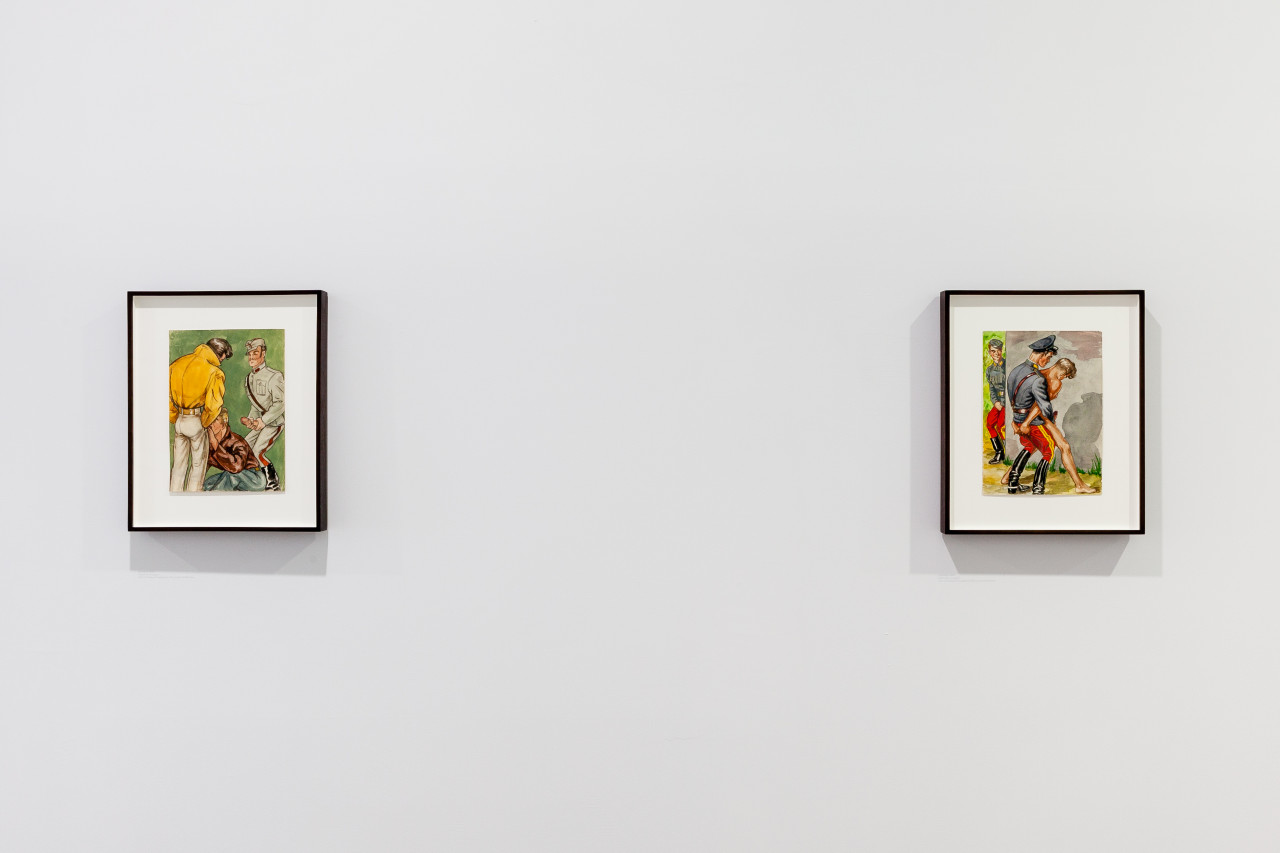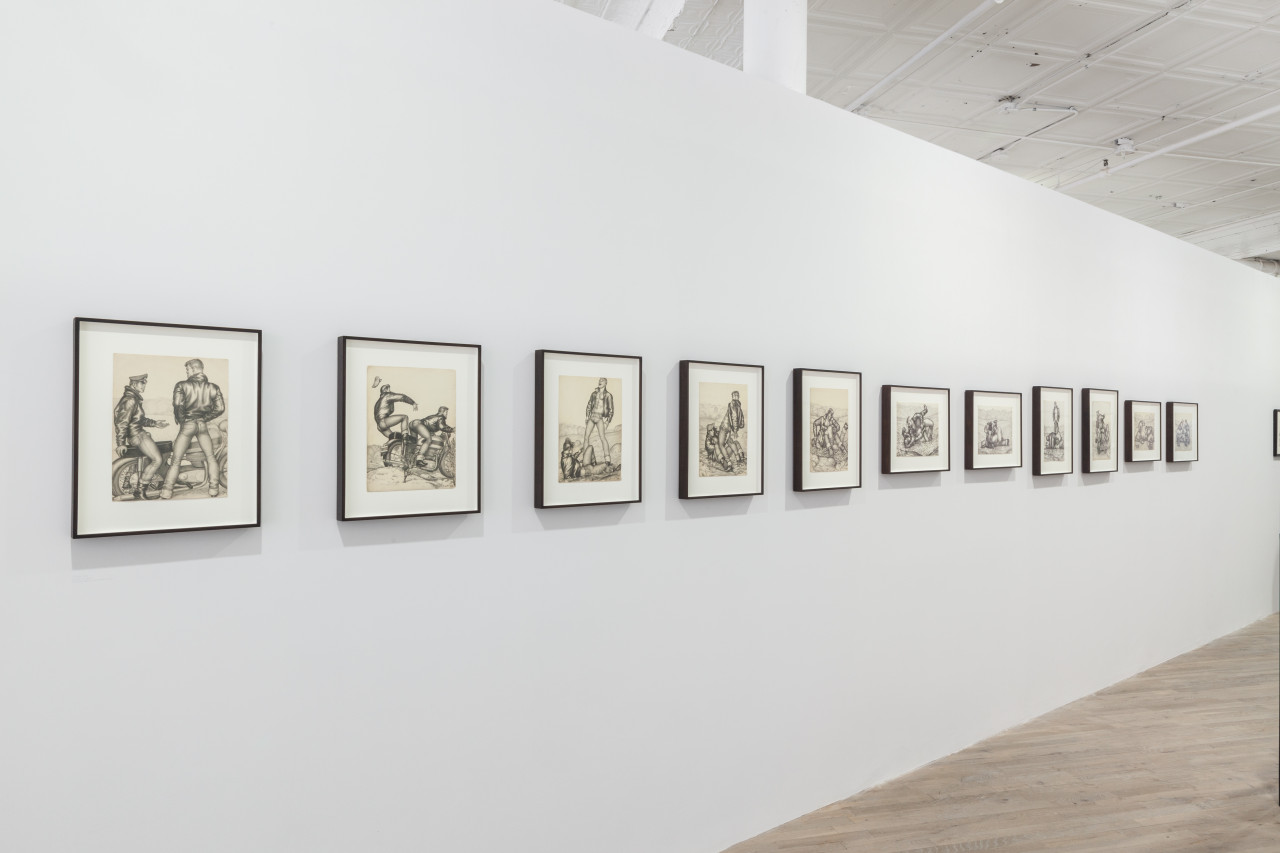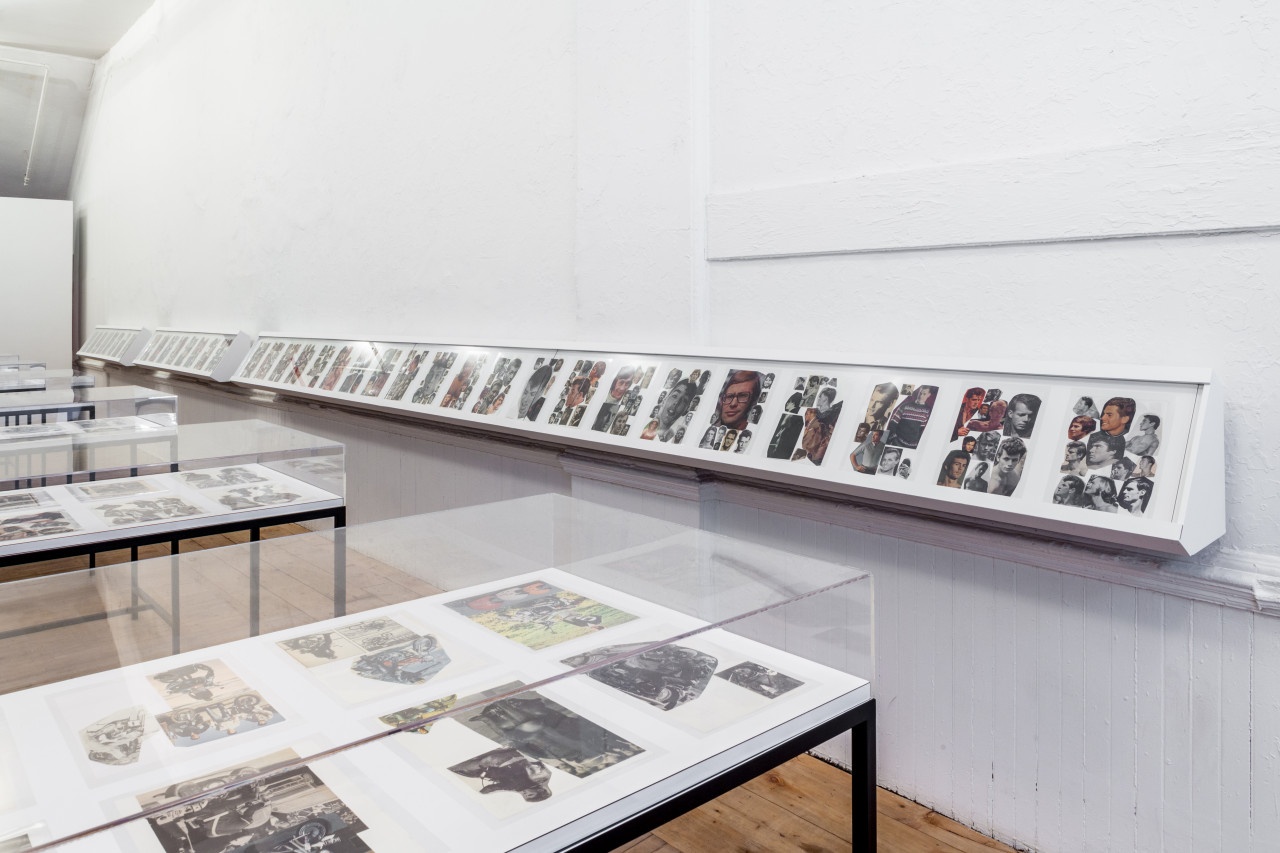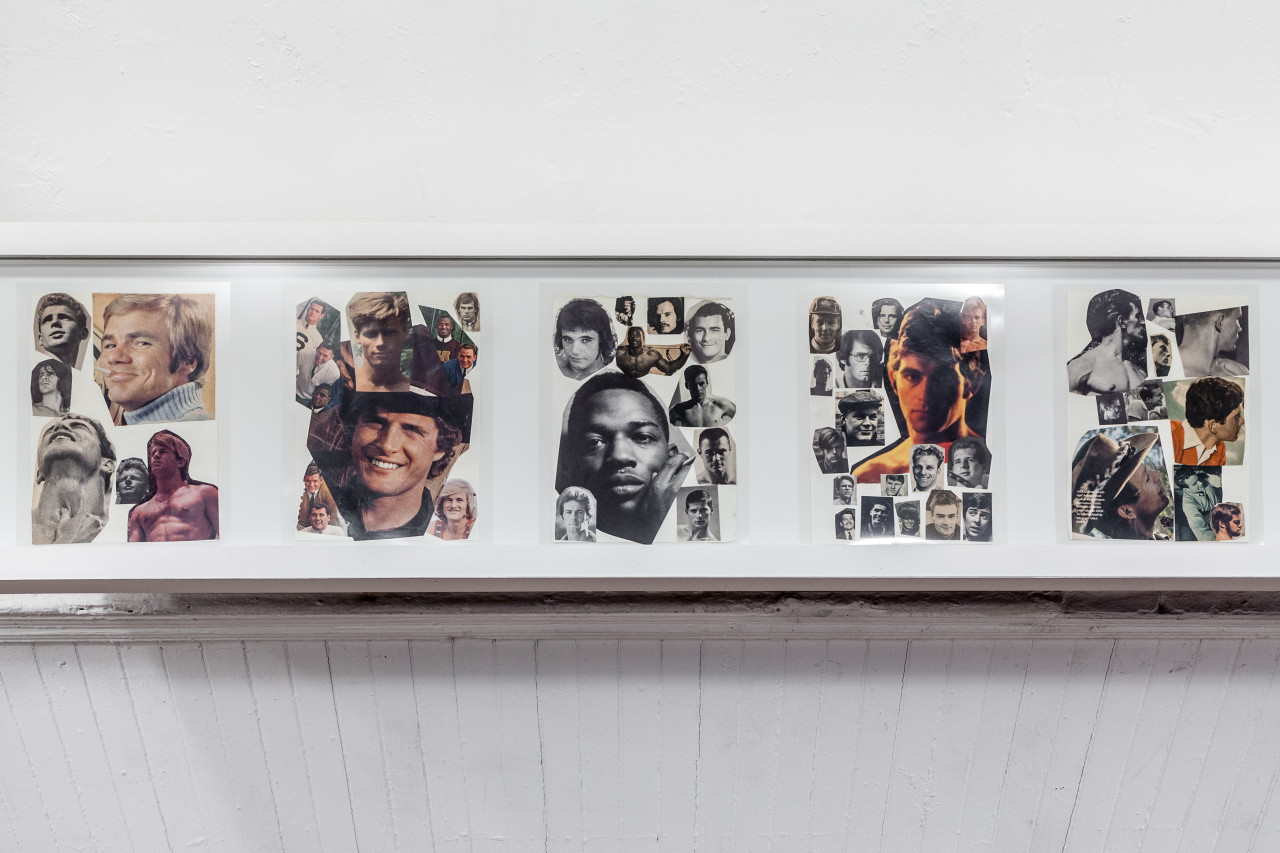Tom of Finland’s biography parallels pivotal moments of 20th century (gay) history, bearing witness to the disasters, the turmoil and the radical changes that took place during his lifetime. Indeed, his work stands in dialectical relationship to these events and the often oppressive culture that surrounded him.
Starting from an early age, Tom of Finland played with the iconographic conventions upon which both the representation and the very conception of masculinity are based. His emblematic, larger-than-life drawn phalluses threaten not only the existing symbolic order of heterosexuality, but also reorganize the principles by which (homo)sexual desires are structured. This fearless portrait of sexuality can also be read as a portrait of the sadomasochistic relationship that is at play between culture and subculture itself, an aspect that runs through gay culture of the 20th and 21st centuries as much as it is present in Tom of Finland’s biography and work.
Working from 1956 to 1973 as senior art director at one of the first global advertising agencies, it is likely that Tom of Finland had access to a range of global mainstream publications as well as illegally published early gay magazines – both from which he would meticulously cut out details and compose on single pages to later use as studies, or as he called them, reference pages.
It is telling that many of these cutouts are taken from global print campaigns; Tom of Finland seemingly studying and taking apart the representations of maleness and gender-assigned attributes in mainstream media, and fusing them with cutouts from gay periodicals. Originally separated into binders, the majority of these collages were sorted by distinct taxonomies: leather jackets, motorcycles, uniforms, beards, hairdos and so forth. On rare occasions he also drew directly onto these cutouts,to either amplify or reduce the existing attributes.
In some respects the collages are key to an understanding of Tom of Finland’s work. During the day (at least until 1973), as an acclaimed advertising executive Tom of Finland was involved hands-on in creating the hetero-normative vision of the happy suburban family of the late 1950s; while at night, he would cut up the very basis of his own work (print advertising) to study, to analyze and to categorize – turning these reference pages towards the exact opposite of their origin. One aspect of Tom of Finland’s drawings is that the faces of his protagonists feature a familiar, recognizable likeness – these bold, grinning faces, while in the act of sadomasochistic play, present a fearless vision of sexuality pointing towards the culture that constructed the relationship between sexuality and fear in the first place.
Because of Tom of Finland’s compound status as artist and sub-culture icon, his work has for years been admired by many artists including the late Mike Kelley, who in 1988 invited him to speak at CalArts (documentation of which is on view at Artists Space Books & Talks); Raymond Pettibon, who became a lifetime supporter of the Tom of Finland Foundation; as well as Richard Hawkins, who continues to work with the Foundation today.
